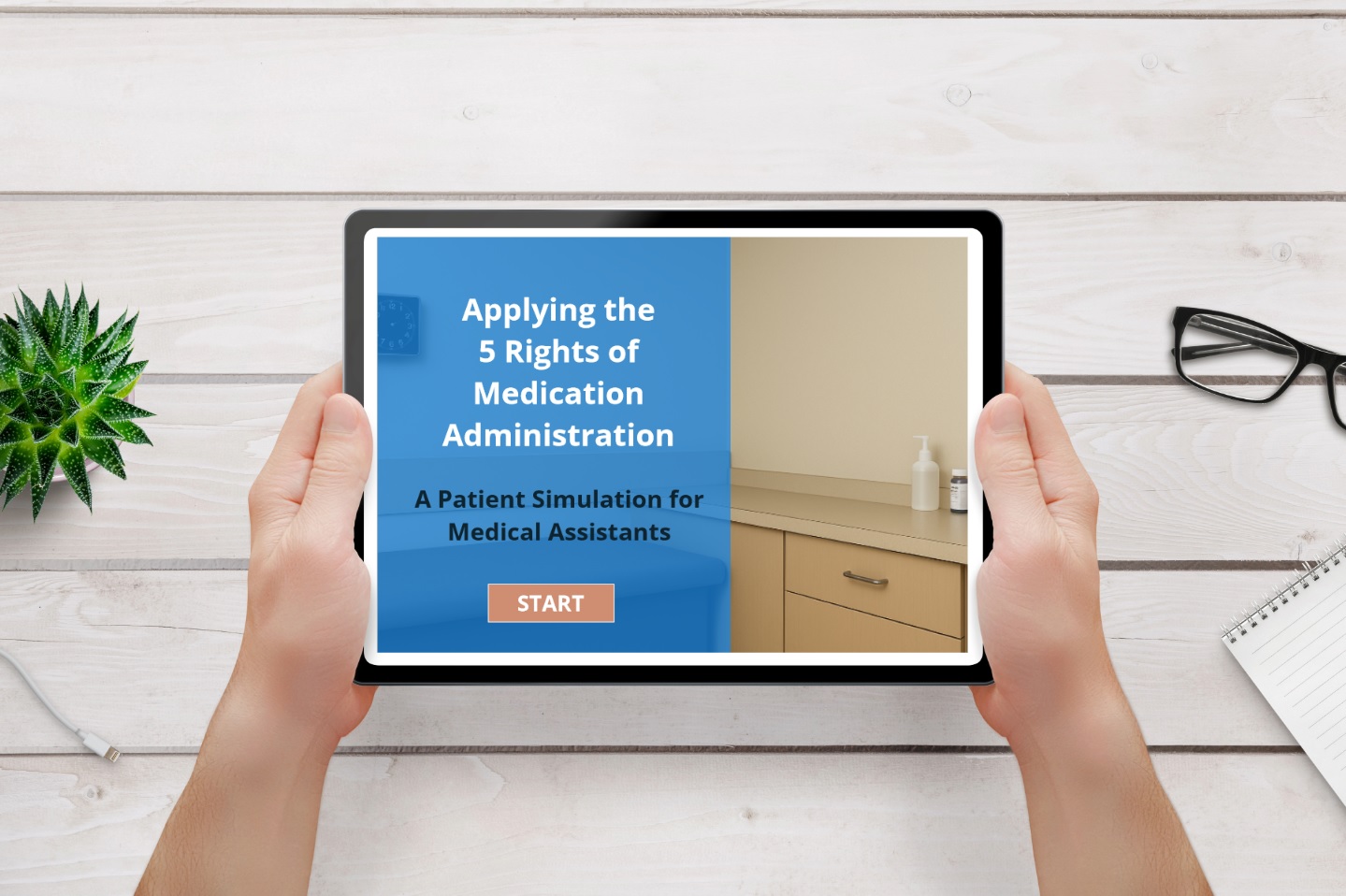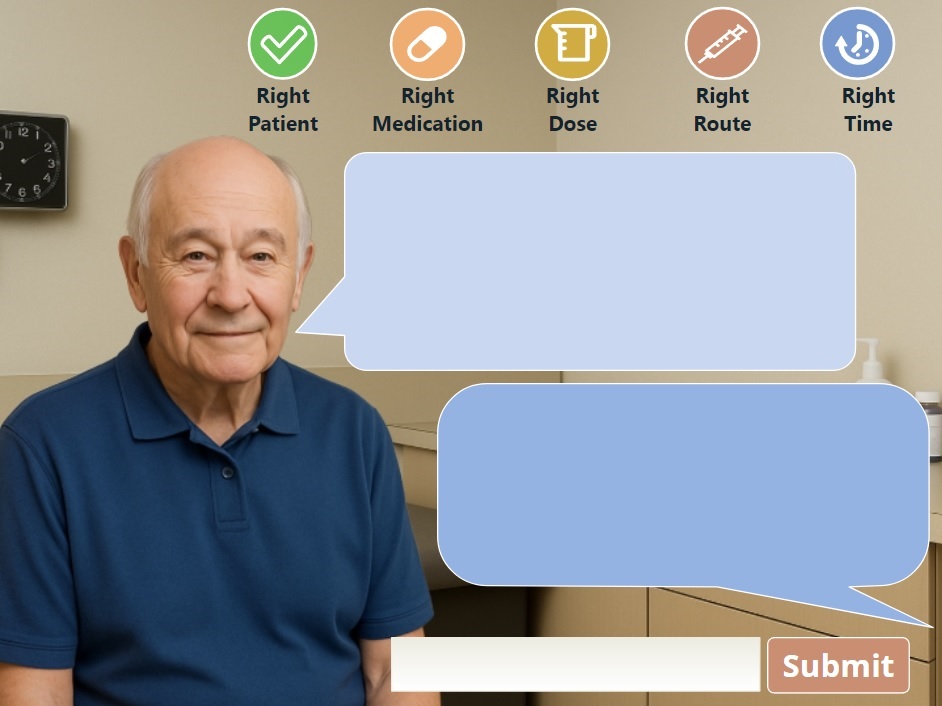Applying the 5 Rights of Medication Administration

Experimental eLearning prototype designed to help medical assistants practice verifying the 5 Rights of Medication Administration through simulated patient interactions.
The experience leverages AI to create dynamic, realistic conversations that foster communication skills and critical thinking.
- Tools Used: Articulate Storyline 360, OpenAI API (integrated via FastAPI, Python, and JavaScript), Adobe Illustrator.
The Problem
Traditional training on the 5 Rights of Medication Administration is often passive, relying heavily on text based content, checklists, and rote memorization. While this approach may convey essential facts, it falls short in preparing learners for the dynamic and unpredictable nature of real clinical encounters.
In most standard eLearning modules, learners are not given the opportunity to actively engage in realistic scenarios where they must ask the right questions, interpret patient responses, or adapt to unexpected situations. As a result, learners may struggle to transfer knowledge from training to practice, especially when communication, critical thinking, and patient rapport are essential to medication safety.
Proposed Solution
I created a simulation based eLearning experience where learners interact with a virtual patient powered by AI. The design encourages active learning by requiring learners to ask appropriate questions and respond to realistic dialogue. The patient model adapts based on learner input and gently redirects when key information is missed, reinforcing safe practices without breaking immersion.
Full Development
Using Storyline 360, I developed an interactive front end with scenario branching and real-time feedback. The interface leverages JavaScript to manage user input and dynamically update the simulation. On the backend, I implemented a FastAPI server in Python, which handles communication with the OpenAI API.
Each learner message is processed through a carefully crafted prompt to ChatGPT, ensuring that the virtual patient responds naturally and remains in character.

The prototype demonstrates how AI can enhance learner engagement and skill acquisition in healthcare training.
Takeaways
This project demonstrated the potential of AI, specifically large language models (LLMs), to enhance realism and engagement in eLearning by simulating patient interactions. While LLMs can create dynamic, natural responses, they are still experimental and must be used thoughtfully as a tool, not a replacement for instructional strategy.
I learned that giving the AI clear, structured instructions is essential to guide its behavior and maintain the integrity of the learning experience. Through this process, I also gained practical experience integrating ChatGPT with Storyline 360. I'm excited to continue exploring how LLMs can be used to support and enrich learning experiences across various contexts.